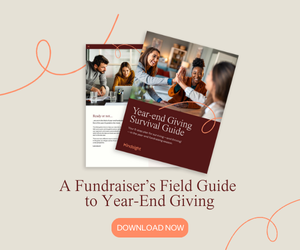Sponsored Content Example

The planning for this year is in full-swing, and a new year often means new media budgets, which can help nonprofit organizations make a significant impact in driving their missions forward. Whether it’s recruiting and activating new audiences, or increasing fundraising dollars, a healthy digital advertising program can make all the difference in meeting annual organizational goals.
Yet there is one common mistake that many organizations continue to make year after year when it comes to planning and utilizing media budgets. Many organizations resort to spending big sums of money in a short amount of time, specifically during times when hitting direct response goals are the most important, such as the end of a recruitment cycle or during year-end fundraising. As a result, these organizations see high costs and poor performance, prohibiting them from driving impact or truly understanding which platforms and tactics are most effective within their campaigns.
It’s worth noting that spending during these times is inevitable — it’s the lack of spending during the rest of the year that’s the issue. By not taking a more long-term, integrated approach to advertising, you’re losing the chance to cultivate a relationship with the audiences that you’ll need to activate during those key moments. This means fewer and more costly conversions when you need them the most, and results in wasted budget that could be used elsewhere.
So how can nonprofits plan their media budgets more effectively?
While there’s no one size fits all approach, the biggest consideration should be how to transition to a longer-term spending strategy to get the most impact out of your digital advertising plan and how to be most cost-effective.
The first place to start is making sure that some of your budget gets allocated to each part of your marketing funnel. Direct response efforts are not going to be as fruitful without investing in audience awareness and consideration. A simple way to think about dividing up the budget is within three key phases: awareness, lead generation and direct response.
In an ideal world, your awareness budget would always be on throughout the year, even at a smaller spend level, helping to drive a steady drumbeat of brand recognition among new audiences each month. If that’s not an option, consider planning an awareness spend in the months or weeks leading up to when you’re planning to make a bigger ask, like collecting an email or asking for a donation. The focus of this spend should be on reaching new audiences and reinforcing your brand message; it’s also a great time to integrate storytelling and perform message tests. During this time, you would want to focus on targeted engagement, no large asks.
Similar to awareness, lead generation efforts can benefit from an “always on” approach, with the focus being on targeting warmer audiences—i.e., those who have already heard about you or engaged with you in some way (including by clicking on an awareness ad). This is the opportunity to make a “softer” ask, whether that’s asking for an email, social follow or petition signature. Getting a longer-term touchpoint with those who have already been introduced to your mission, and shown intent that they want to get to know you better, is imperative for driving the best results and greater efficiency during key activation moments throughout the year.
When it’s time to make the bigger ask during those key moments, you’ll want to leverage your owned audiences as much as possible. For fundraising objectives, the focus becomes acquiring new one-time and monthly donations, or retaining/increasing donation size/frequency from existing donors, all of which won’t happen as efficiently without some level of previous brand awareness and engagement. For other types of objectives, whether it’s driving program applications, event registrations or on-site purchases, there will likely be a much higher conversion rate for those with a better understanding of your brand, or who have previously engaged in some way.
An additional benefit to a year-long media strategy is being able to use “down” times to test and learn, meaning the times where you have a little more wiggle room, try different media partners, tactics, targeting and messaging to see what works best. These tests can better help inform your approach during the higher impact moments, making sure that every penny spent goes toward tried and true tactics.
Ultimately, you decide how your media budget gets divided between these different phases and how they get mapped out throughout the year. The key takeaway should be that by approaching digital advertising through a long-term, full-funnel lens it gives your organization more opportunity to reach new audiences efficiently and establish key touchpoints that can result in much greater success when it comes to the goals you’re trying to achieve — whether that be more dollars raised, more completed applications, more event participants or more items purchased.


 Katey Parker is the SVP of Marketing Services at
Katey Parker is the SVP of Marketing Services at 
